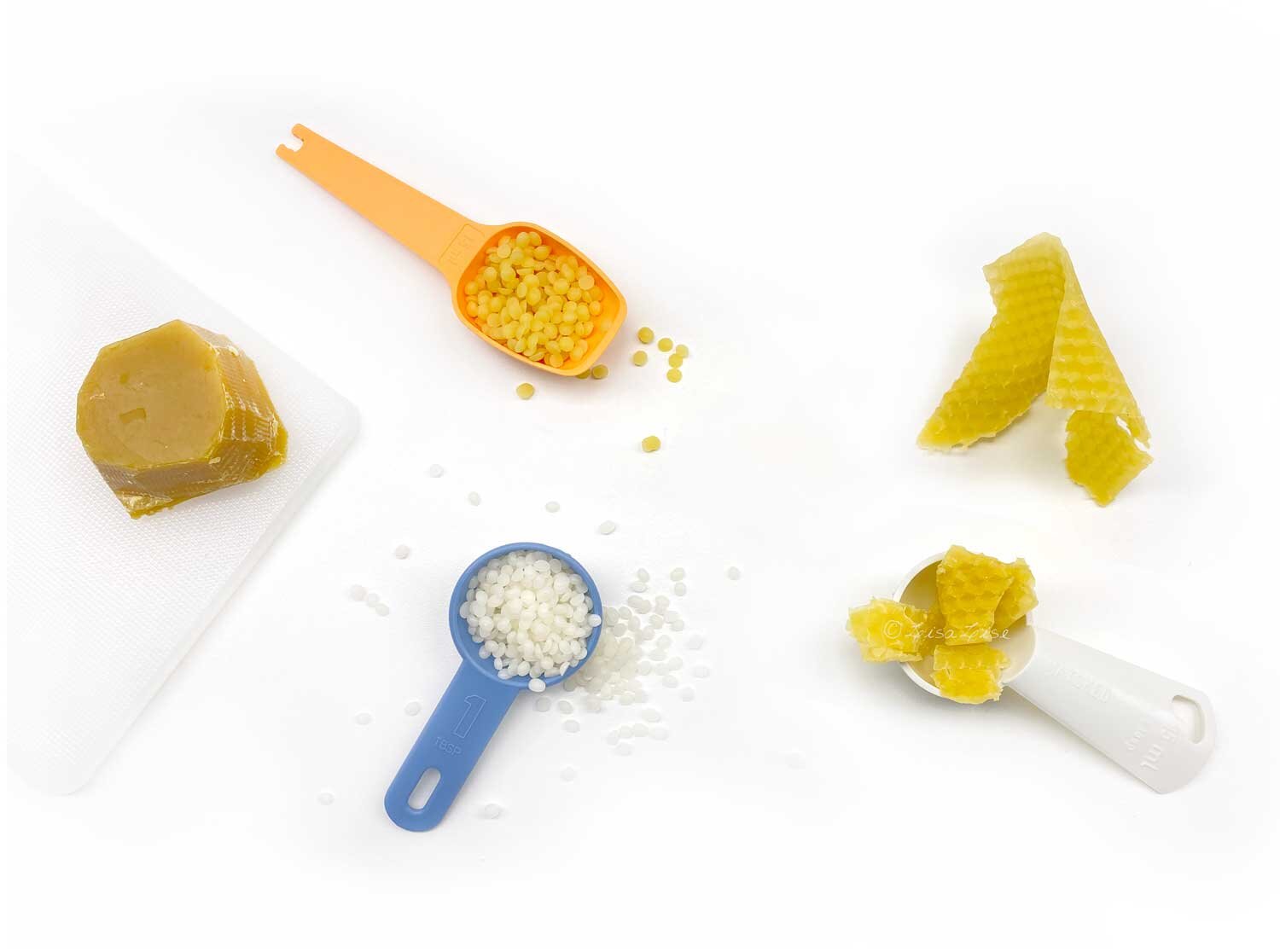A Tablespoon of Beeswax
Lise
Every time I see a cosmetic how-to that calls for tablespoons and teaspoons, I cringe (a lot) and cry (a little), then hope the person following this kind of inaccurate instruction finds their way to a better source of information before they give up on making cosmetics due to a string of failed batches.
Because a good part of the time, an inconsistent and unsatisfactory outcome is exactly what they will experience.
The Biggest Beginner Mistake of Making Cosmetics
The number one mistake made by cosmetics making newbies is measuring ingredients by volume.
TIP: An indicator that you may well be following unprofessional instruction is if the ingredients list calls for teaspoons, cups, and tablespoons.
Let’s take a look at why this is a recipe for failure. (pun totally intended).
Say you’re following an instruction that calls for ‘a tablespoon of beeswax’.
You pull out your beeswax. Perhaps you are using unbleached pellets, or maybe you have bleached beeswax beads, or perhaps your beeswax is in sheets. You might even have a block of beeswax.
How do you measure a tablespoon of beeswax?
And does a tablespoon mean a ‘level’ tablespoon? Maybe it means a ‘heaping’ tablespoon? In a cooking recipe, this kind of thing might not matter too much, but in a cosmetic formula, it can (and will) make the difference between a successful or failed batch.
If you’re making a lotion bar and measure everything by volume, the bar might end up so soft it doesn’t hold its shape, or it could be so hard it is unpleasant and difficult to apply.
Measuring by volume is fine for cooking, but simply not accurate enough for cosmetics.
Cosmetics Making Rule Number One
In lesson 1 of the Essential Formulation course at Tisserand Institute, one of the first things participants hear from me is: “Get yourself an accurate scale because cosmetics ingredients are always measured by weight”.
This isn’t something I invented. It is standard procedure for making cosmetics - whether you are working in your own kitchen, in a development lab, or at a production facility.
After taking the picture you see above, I weighed these tablespoons of beeswax. Here are the results.
Bleached beads 8.3 g / 0.29 oz
Yellow pellets 6.6 g / 0.23 oz
Sheet 3.5 g / 0.12 oz
Quite a difference there, don’t you agree? Imagine the different outcomes you would have experienced in your lotion bar depending on which beeswax you had used.
As for measuring a tablespoon from the block of beeswax: this could have been approached several ways: shaving off bits, cutting off bits, or melting and pouring up. Each of these methods would have given different results.
The moral of this story: well, heck, you’ve guessed that by now, haven’t you?
PS: My talented formulating friend Marie Rayma of Humblebee & Me does an excellent demonstration of how inaccurate measuring (flakes of) beeswax by the tablespoon is in her latest YouTube presentation. (The beeswax measuring starts at 4:26).
Do Tell
How do your measure your cosmetics ingredients? Have you ditched the cups and spoons and fallen in love with your scale yet?
TIP: This book shows you how to work with percentages, calculate your batches and measure by weight.


